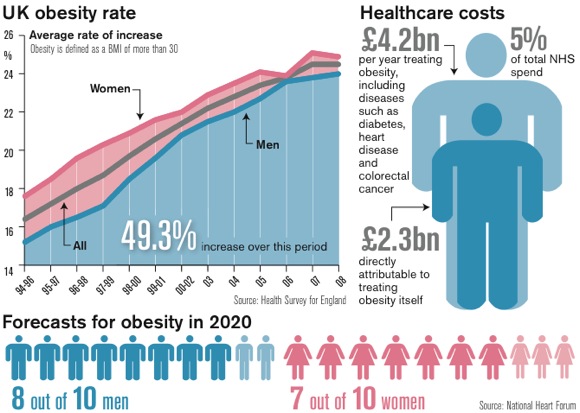Week 4- Close-up on cholesterol
Close-up on Cholesterol:
Cholesterol belongs to a family of lipids called steroids, which have a common structure (see diagram above), very different to the triglycerides we have met before. Our notion of cholesterol as bad is overly simplistic. When we say "cholestrol" we are actually referring to two different cholesterol transporters found in the blood: high-density and low-density lipoprotein, otherwise known as HDL (‘good’) and LDL (‘bad’) cholesterol.
Raised levels of LDL cholesterol are generally associated with an increased risk of heart disease. According to most sources, it is not eating high-cholesterol foods, such as eggs, that drives up our blood cholesterol levels, but eating foods that are high in saturated fats. This is because our livers turn saturated fats like those in cakes and pastries into LDL cholesterol in the blood.
The past few years have seen continued questioning of dietary guidance on saturated fats and cholesterol. However, a 2015 study based on changing the diets of 195 people for 16 weeks showed that replacing saturated fats with unsaturated fats reduced LDL cholesterol levels.
Our cholesterol levels are not determined only by what we eat but also by the genes we inherit from our parents. About 1 in 500 people have an inherited condition called familial hypercholesterolaemia, which means they have high cholesterol from birth – whereas in 499 out of 500 people, cholesterol levels don’t get higher until they get older.
Task:
This week you have a choice of tasks. For the your choice of task summarise your findings in your own words in no more than 8 sentences in the comment section below. Some suggested websites have been included but you may wish to carry out further research. If you find particularly helpful or interesting websites add them below too.
Cholesterol belongs to a family of lipids called steroids, which have a common structure (see diagram above), very different to the triglycerides we have met before. Our notion of cholesterol as bad is overly simplistic. When we say "cholestrol" we are actually referring to two different cholesterol transporters found in the blood: high-density and low-density lipoprotein, otherwise known as HDL (‘good’) and LDL (‘bad’) cholesterol.
The past few years have seen continued questioning of dietary guidance on saturated fats and cholesterol. However, a 2015 study based on changing the diets of 195 people for 16 weeks showed that replacing saturated fats with unsaturated fats reduced LDL cholesterol levels.
Our cholesterol levels are not determined only by what we eat but also by the genes we inherit from our parents. About 1 in 500 people have an inherited condition called familial hypercholesterolaemia, which means they have high cholesterol from birth – whereas in 499 out of 500 people, cholesterol levels don’t get higher until they get older.
Task:
This week you have a choice of tasks. For the your choice of task summarise your findings in your own words in no more than 8 sentences in the comment section below. Some suggested websites have been included but you may wish to carry out further research. If you find particularly helpful or interesting websites add them below too.
- Cholesterol levels commonly rise in old age. Find out how the aging population should reduce cholesterol levels. http://www.benecol.co.uk/cholesterol/lowering-cholesterol
- LDL cholesterol builds up in the arteries forming atherosclerosis plaques, as seen in the diagram above. Find out about the implications of atherosclerosis plaques forming in blood vessels. http://www.nhs.uk/conditions/atherosclerosis/Pages/Introduction.aspx
- Find how smoking affects cholesterol and associated diseases. http://www.nhs.uk/Conditions/Cholesterol/Pages/Introduction.aspx
- Cholesterol is essential in cell membranes. Summarise how it affects the properties of membranes. https://alevelnotes.com/The-Fluid-Mosaic-Model/129
- Cholesterol belongs to a family of lipids called steroids. Find out more about the structure of steroids. Focus on what the steroid family have in common, and what part of their structures differ. http://chemistry.elmhurst.edu/vchembook/556steroids.html and http://www.chemguide.co.uk/basicorg/conventions/draw.html
- Statins are a family of drugs used to reduce cholesterol levels. Find out more about them. http://www.nhs.uk/conditions/Cholesterol-lowering-medicines-statins/Pages/Introduction.aspx https://bigpictureeducation.com/should-all-people-over-55-be-given-statins
Fat fanatic task:
Complete more than one of the suggested tasks above.






